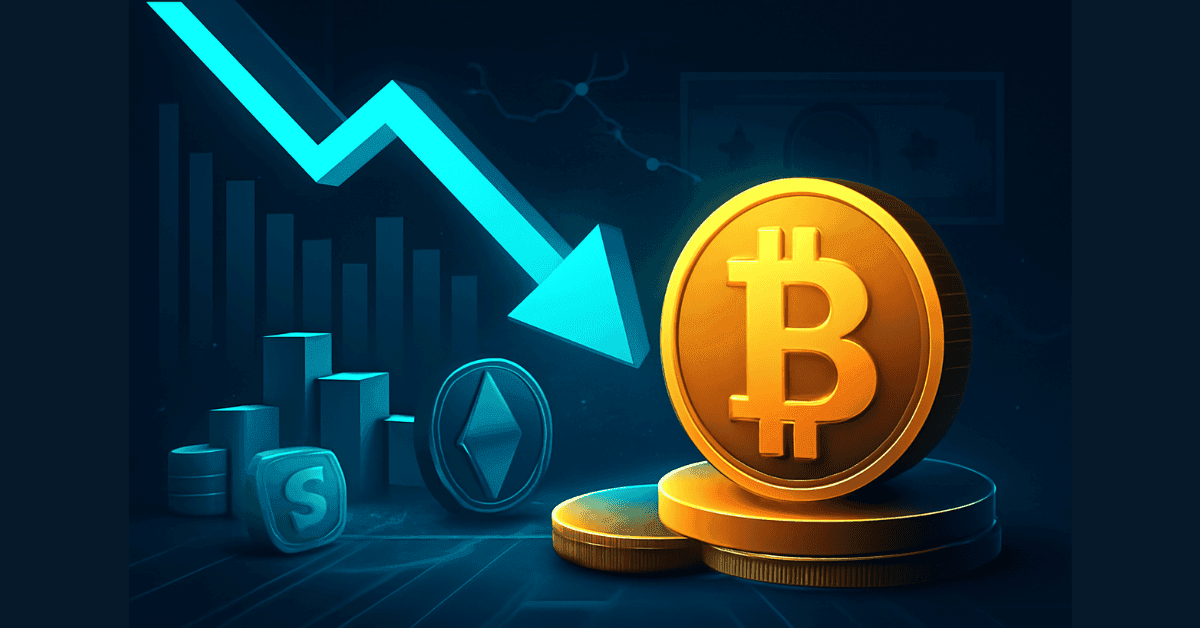
Deflation and Its Impact on the Crypto Market
In a constantly shifting global economy, the concept of deflation is no longer exclusive to traditional markets. It also has a growing influence on the cryptocurrency market — a sector highly sensitive to economic cycles. Although deflation increases the purchasing power of money, it doesn’t necessarily benefit the entire economy — including crypto.
1. What Is Deflation in the Context of Crypto?
Deflation refers to a sustained decline in the prices of goods, services, or even digital assets, making stablecoins or fiat currency more valuable. With the same amount of USDT, users can buy more Bitcoin or Ethereum. However, this may also indicate declining market confidence, capital outflows, and a slowdown in investment activity.
Unlike traditional finance, deflation in crypto is not measured by the Consumer Price Index (CPI), but it can be observed through:
-
- A prolonged decline in token prices
-
- Sharp drops in liquidity on DEXs and CEXs
-
- Capital exiting from DeFi, NFTs, and GameFi
-
- Stablecoins remaining idle instead of circulating
2. Causes of Deflation in the Crypto Market
2.1. Declining Confidence and Defensive Behavior
Much like in traditional financial crises, when collapses such as FTX, Terra-LUNA, or Celsius occur, crypto investors tend to act defensively — panic-selling assets, hoarding stablecoins, or converting back to fiat. This behavior causes a steep and sustained price drop, reinforcing a deflationary spiral.
2.2. Technological Competition and Network Efficiency
Advancements such as Layer 2 scaling, zk-rollups, and sharding reduce transaction costs and increase network throughput. While beneficial in the long term, in the short term, increased competition and lower fees can drive down token valuations, especially if not backed by user growth.
2.3. Macroeconomic Liquidity Contraction
The Federal Reserve’s rate hikes, reduced liquidity, and halting of lending or staking services on CeFi platforms have similar effects to tightening monetary policy. Without new capital inflow and with reduced staking returns, investor appetite weakens, extending the market downturn.
3. How Does Crypto React to Deflation?
Deflation in crypto can lead to:
-
- Token prices dropping below launch prices (e.g., IDO/ICO levels)
-
- Projects struggling to raise funds and dwindling community engagement
-
- DeFi protocols underperforming
-
- Slowed user adoption and network activity
However, deflation can also present long-term accumulation opportunities if investors:
-
- Hold stablecoins and wait for low-entry price zones
-
- Take advantage of high APY yields from protocols maintaining liquidity
-
- Focus on fundamentally strong projects with clear roadmaps
4. What to Do During a Crypto Deflationary Cycle?
-
- DeFi liquidity incentives: Projects are launching campaigns like airdrops, reward pools, and yield boosts to reignite activity.
-
- Encourage long-term staking: Reducing circulating supply can ease sell pressure.
-
- Increase real-world utility: GameFi, NFT, and Layer 1 chains must focus on product delivery, not just marketing.
-
- Watch for macro catalysts: Events like spot Bitcoin ETF approval, Bitcoin halving, or supportive regulations may reverse deflationary trends.
5. Deflation vs. Inflation in Crypto
| Term | Key Characteristics | Crypto Example |
|---|---|---|
| Deflation | Prolonged price declines, capital outflows | 2022–2023 post-LUNA & FTX collapse |
| Inflation | Rapid price increases, driven by FOMO | Late 2020–Early 2021 “DeFi Summer” period |
6. Conclusion
Whether it’s deflation or inflation, the most important thing for crypto investors is to recognize the cycle, manage risk, and stay grounded. Deflation may not be as frightening as it seems — if you can remain patient and spot opportunities while others are giving up.